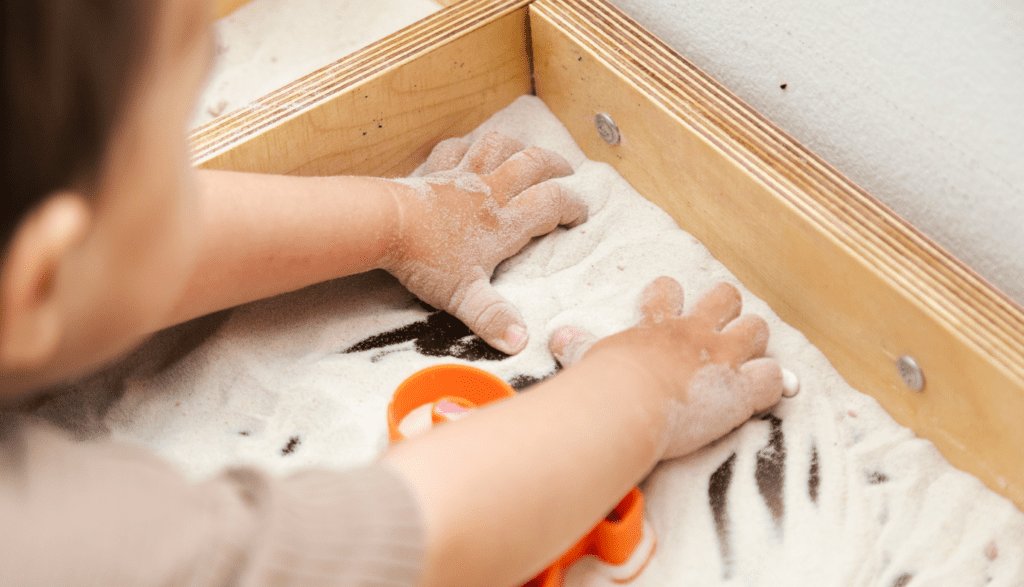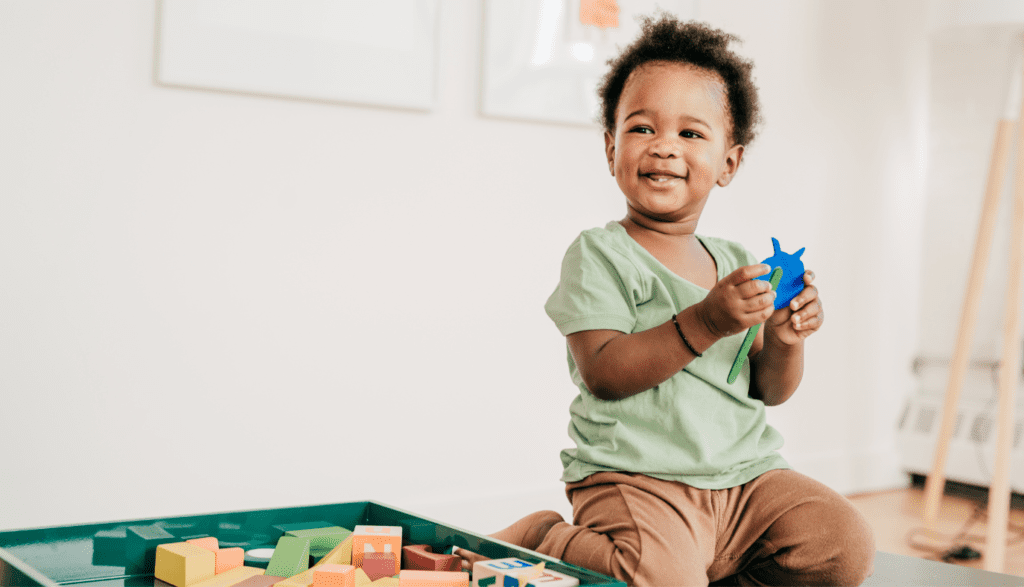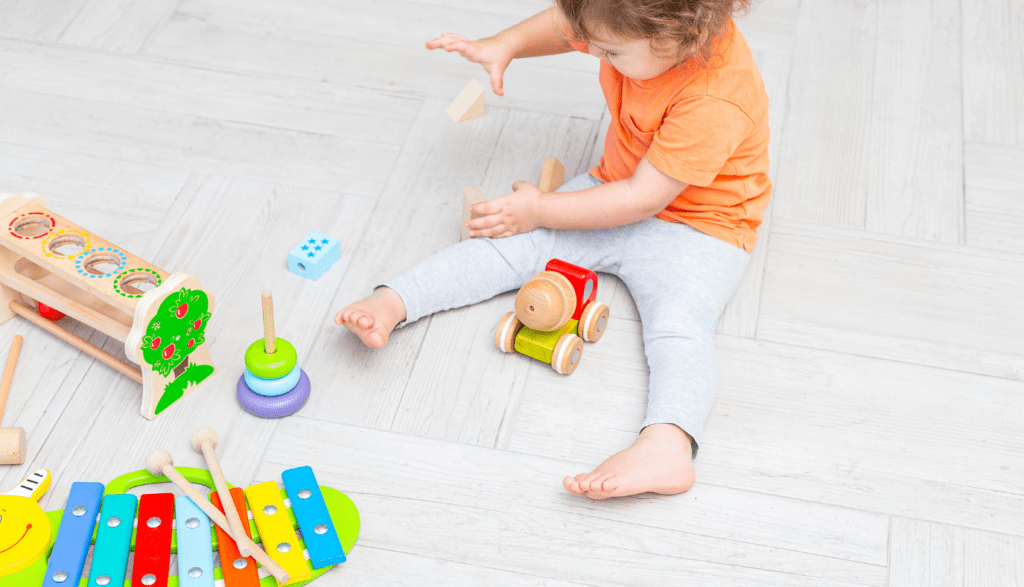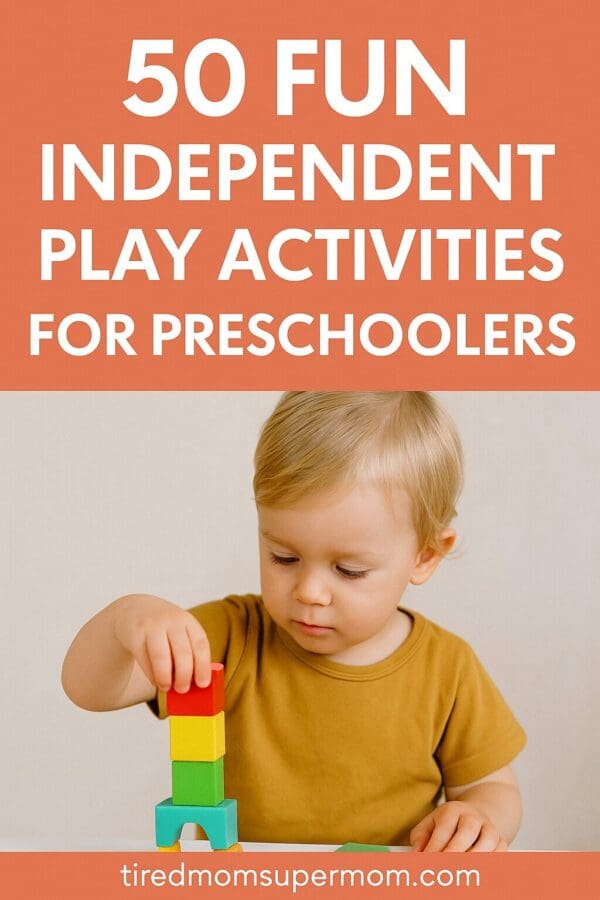50 Easy Independent Play Activities for Preschoolers
As a parent, watching your child play independently is more than just a moment of peace — it’s a sign of healthy development.
If you’re wondering how to encourage independent play activities for preschoolers, you’re in the right place!
Independent play fosters creativity, critical thinking, emotional regulation, and self-confidence — skills that preschoolers need as they grow.
Heads up: This post may include affiliate links. As an Amazon Associate, I earn from qualifying purchases—at no extra cost to you. Full privacy policy and disclosure here.

Why Independent Play Is Essential for Preschoolers
Independent play offers preschoolers a safe space to explore their creativity, make decisions, and build confidence. According to the American Academy of Pediatrics, self-directed play is critical for social, emotional, and cognitive development.
By encouraging independent play activities for preschoolers, you’re giving your child the tools to:
- Develop patience and focus
- Strengthen problem-solving skills
- Foster a love of learning
- Build emotional regulation
Want to encourage rich play? Here are 2 easy parenting tips you can start using today.
How to Set Up the Perfect Independent Play Space
Creating an inviting space is key! Keep these tips in mind:
- Offer open-ended toys (like building blocks and pretend playsets)
- Rotate toys weekly to keep interest high
- Use low shelves for easy access
- Create cozy, defined play areas
Need a step-by-step guide? Here’s how to create a baby play area at home that grows with your child.

Best Independent Play Activities for Preschoolers
Here’s the big list you’ve been waiting for — organized by theme for easy browsing!
1. Building and Construction Activities
- Building with Melissa & Doug Wooden Building Blocks
- Creating structures with Magna-Tiles Building Set
- Assembling cardboard box forts
- Designing LEGO towers
- Magnetic building rods
2. Pretend Play Activities
- Running a play kitchen with a KidKraft Wooden Play Kitchen
- Playing store with toy cash registers
- Veterinarian pretend play
- Pirate treasure hunts
- Firefighter rescue missions
3. Art and Craft Activities
- Painting with washable paints
- Coloring in Water Wow! Pads
- Sticker collage creations
- Playdough modeling
- Bead threading
4. Sensory Play Activities
- Ice cube melting experiments (explore more in benefits of ice play for toddlers)
- Kinetic sand exploration
- Water table play
- Sensory bin scooping
- Bubble foam fun
5. Outdoor Play Activities
- Backyard scavenger hunts
- Water painting on sidewalks
- Playhouses for kids
- Playground visits (read about the benefits of playground play)
- Nature treasure collecting
6. STEM and Discovery Activities
- Simple magnet experiments
- Mixing baking soda and vinegar reactions
- Creating shadow puppets
- Building simple circuits (safe kits available for preschoolers)
- Sorting objects by size and color
7. Quiet Time Activities
- Listening to audiobooks
- Completing easy puzzles like Ravensburger Toddler Puzzles
- Lacing cards
- Solo board games
- Building with soft blocks
8. Music and Movement Activities
- Freeze dance games
- Ribbon dancing
- Making music with toy instruments
- Setting up obstacle courses
- Animal movement charades
9. Small World Play Activities
- Dinosaur land setups
- Fairy garden creations
- Farm animal role-playing
- Racecar tracks
- Dollhouse adventures
10. Fine Motor Skill Activities
- Button and zipper practice boards
- Cutting and pasting crafts
- Tweezers and pom-pom sorting
- Threading large beads
- Peg board play

Best Toys to Support Independent Play
Choosing the right toys can make independent play activities for preschoolers even more enriching!
Here are our favorite Amazon picks:
- Melissa & Doug Wooden Building Blocks
- Magna-Tiles Building Set
- Water Wow! No-Mess Coloring Pads
- KidKraft Wooden Play Kitchen
- Ravensburger Toddler Puzzles
These open-ended toys keep little ones busy and promote creativity!
Benefits of Limiting Toys for Better Independent Play
Believe it or not, fewer toys = better play!
Research (and experience!) shows that when kids have fewer choices, they:
- Play longer
- Focus better
- Engage more creatively
Learn more in this helpful post on why having fewer toys is best for kids.
How to Be a More Playful Parent
While independent play is important, preschoolers also love connecting with you.
If you want to inject a little more fun into your days, check out these 9 ways to be a more playful mom.
FAQ About Independent Play Activities for Preschoolers
How long should a preschooler play independently?
Most 3–5 year-olds can manage 30–60 minutes of independent play each day.
What is the best type of toy for independent play?
Open-ended toys like building blocks, dress-up clothes, art supplies, and play kitchens work best.
What if my preschooler doesn’t want to play alone?
Start small — even 5 minutes at a time helps build confidence! Gradually increase the time and praise their efforts.
How can I keep independent play fresh and exciting?
Rotate toys regularly, set up simple invitations to play, and introduce new sensory experiences like ice play activities.
Why is independent play so important?
It nurtures creativity, problem-solving, emotional resilience, and a love of learning.
Final Thoughts: Start Encouraging Independent Play Today!
Introducing your child to regular independent play activities for preschoolers is one of the best gifts you can give them.
Start small, create an inviting space, provide open-ended toys, and celebrate their growing independence every step of the way.

